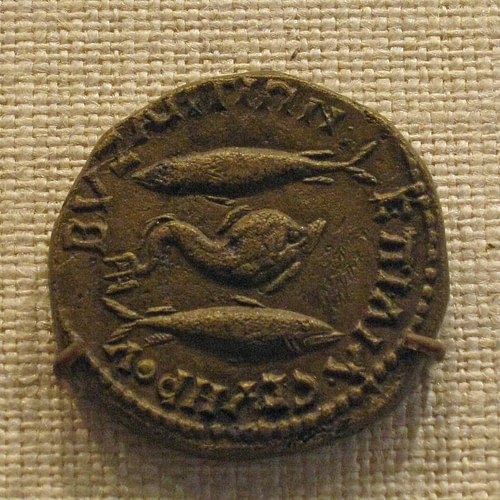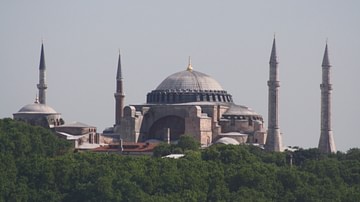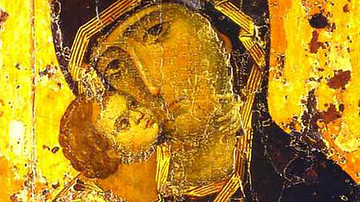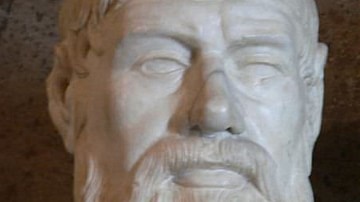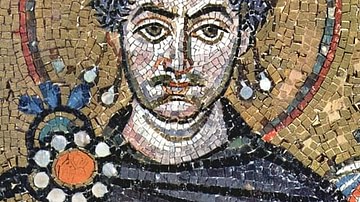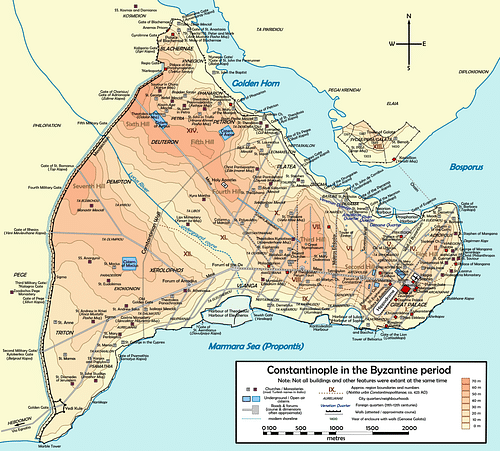
The ancient city of Byzantium was founded by Greek colonists from Megara around 657 BCE. According to the historian Tacitus, it was built on the European side of the Strait of Bosporus on the order of the “god of Delphi” who said to build “opposite the land of the blind”. This was in reference to the inhabitants of Chalcedon who had built their city on the eastern shore of the Strait; the west side was considered far more fertile and better suited for agriculture. Although the city accepted the alphabet, calendar, and cults of Megara, much of the city's founding still remains unknown. The region would remain important to the Greeks as well as the Romans. While it lay in a highly fertile area, the city was far more important due to its strategic location. Not only did it stand guard over the only entrance into the Black Sea but it also lay by a deep inlet - The Golden Horn - meaning the city could only be attacked from the west.
From the Persian Wars to Alexander
Because of its location, the city became the center of the continued war between the Greeks and Persians. During the Greek and Persian Wars, the Byzantines initially supported Darius I in his Scythian campaign providing him with ships but turned against him later. Darius destroyed the city, making the entire area part of the Achaemenid Empire in 513 BCE. During the Ionian Revolt, Greeks forces captured the city but were unable to maintain control, losing it to the invading Persians. Many of the residents of both Byzantium and Chalcedon fled, fearing reprisals from the Persians. The Spartan general, Pausanias, victorious against the Persians at the Battle of Plataea in 478 BCE, traveled northward and conquered the city, becoming its governor. With the Persians so close, he made peace with the Persian king Xerxes I, possibly offering to help the Persians to conquer Greece. He remained Byzantine governor until 470 BCE when he was recalled by the Spartans.
Throughout the Peloponnesian War between Sparta and Athens, the area had split loyalties. The Athenians wanted to control Byzantium because they needed to import grain through the Strait from the Black Sea, and the Spartans wanted the city to stop the grain flow to Athens. Its prosperous economy benefited Athens, and because of this the city had been made part of the Delian League; however, the high tributes the city had to pay to Athens - and the fact that Athens was losing the war - forced them to switch sides to Sparta in 411 BCE. The Spartan general Clearchus easily seized the city. This switch allowed Sparta to stop vital grain shipments through the Strait to Athens. When the Athenian leader Alcibiades outwitted the Spartans in battle in 408 BC, Clearchus abandoned the city, and the area again became Athenian. Later, however, Sparta regained control when Lysander defeated the Athenians in 405 BCE. This final defeat cut off the Athenian food supply, forcing them to surrender to Sparta in 404 BCE, thereby ending the Peloponnesian War. The following year Byzantium faced a threat from the Thracians to the west and sought help from Sparta who took control of the city. Around 390 BCE the city changed hands again when the Athenian general Thrasybulus ended Spartan power.
In 340 BCE Phillip II of Macedon laid siege to Byzantium. The city had initially contacted Phillip when threatened by Thrace; however, when they refused to side with Phillip and turn against Athens, he attacked but soon retreated after the Persian army threatened war. His son, Alexander the Great, understood the strategic value of the city and annexed the area when he moved across the Bosporus into Asia Minor on his way to defeat Darius III and conquer the Persian Empire. The city would regain its independence under his more feeble successors. Byzantium continued to exert control over trade through the Strait, but when the island of Rhodes refused to pay the exorbitant fees, war erupted. The war was quickly settled, and the city agreed to reduce its harsh policies.
Roman Period
Although becoming an ally of the Roman Empire and in many ways becoming very Romanized, Byzantium remained fairly independent, acting as a stopping-off point for Roman armies on their way to Asia Minor. The fishing, agriculture, and tributes from ships passing through the Strait made it a valuable source of income for Rome. In 192 CE, after Emperor Commodus was assassinated, a war emerged over who would succeed him. When the city refused to support Septimus Severus, supporting Pescennius Niger of Syria instead, the future Roman emperor laid siege and destroyed the city. He would later regret his actions - due to the influence of his son Caracalla - and rebuild it.
When Emperor Diocletian divided the Roman Empire into a tetrarchy (rule by four), Byzantium fell into the eastern half, ruled by Diocletian. Constantine I came into power in the western half in 312 CE and would soon reunite the empire when he defeated Licinius at the Battle of Chrysopolis in 324 CE. He would build his new capital on the site of ancient Byzantium, New Rome; it would become the cultural and economic center of the east. Upon Constantine's death in 337 CE, the city would be renamed Constantinople in his honor. Although the city maintained its role as an important part of the Byzantine Empire, it would be invaded and captured by the Ottoman Turks in 1453 CE. For further information refer to the definition on Constantinople.
